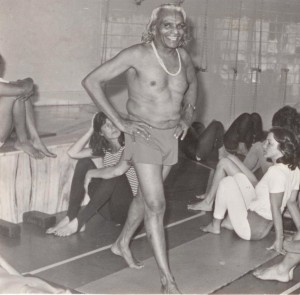Here’s a new word for you. Gelotology is, according to Marshall Brain (how’s that for a name!) the mind behind the “Ho w Stuff Works” series, the study of the physiology of laughter. His article on “How Laughter Works ” (http://science.howstuffworks.com/life/laughter1.htm) has lots of fun information on this delightful physiological phenomenon. “Laughter is the physiological response to humor. Laughter consists of two parts — a set of gestures and the production of a sound. When we laugh, the brain pressures us to conduct both those activities simultaneously. When we laugh heartily, changes occur in many parts of the body, even the arm, leg and trunk muscles.” and …
w Stuff Works” series, the study of the physiology of laughter. His article on “How Laughter Works ” (http://science.howstuffworks.com/life/laughter1.htm) has lots of fun information on this delightful physiological phenomenon. “Laughter is the physiological response to humor. Laughter consists of two parts — a set of gestures and the production of a sound. When we laugh, the brain pressures us to conduct both those activities simultaneously. When we laugh heartily, changes occur in many parts of the body, even the arm, leg and trunk muscles.” and …
“Under certain conditions, our bodies perform what the Encyclopedia Britannica describes as “rhythmic, vocalized, expiratory and involuntary actions” — better known as laughter. Fifteen facial muscles contract and stimulation of the zygomatic major muscle (the main lifting mechanism of your upper lip) occurs. Meanwhile, the respiratory system is upset by the epiglottis half-closing the larynx, so that air intake occurs irregularly, making you gasp. In extreme circumstances, the tear ducts are activated, so that while the mouth is opening and closing and the struggle for oxygen intake continues, the face becomes moist and often red (or purple). The noises that usually accompany this bizarre behavior range from sedate giggles to boisterous guffaws.”
The health benefits to laughing are many. “Laughter reduces levels of certain stress hormones. In doing this, laughter provides a safety valve that shuts off the flow of stress hormones and the fight-or-flight compounds that swing into action in our bodies when we experience stress, anger or hostility.” “People often store negative emotions, such as anger, sadness and fear, rather than expressing them. Laughter provides a way for these emotions to be harmlessly released.” and
“What may surprise you even more is the fact that researchers estimate that laughing 100 times is equal to 10 minutes on the rowing machine or 15 minutes on an exercise bike. Laughing can be a total body workout! Blood pressure is lowered, and there is an increase in vascular blood flow and in oxygenation of the blood, which further assists healing. Laughter also gives your diaphragm and abdominal, respiratory, facial, leg and back muscles a workout. That’s why you often feel exhausted after a long bout of laughter — you’ve just had an aerobic workout!”
Those of us who have worked with the diaphragm and inner organs know that we can spontaneously elicit laughter by getting the ha ha ha or ho ho ho rhythm going and just getting out of the way. And it is contagious.
“Many researchers believe that the purpose of laughter is related to making and strengthening human connections. “Laughter occurs when people are comfortable with one another, when they feel open and free. And the more laughter [there is], the more bonding [occurs] within the group,” says cultural anthropologist Mahadev Apte. This feedback “loop” of bonding-laughter-more bonding, combined with the common desire not to be singled out from the group, may be another reason why laughter is often contagious.”
So, make sure, as many times a day as you can, LOL. Or even better, ROFLYAO.

